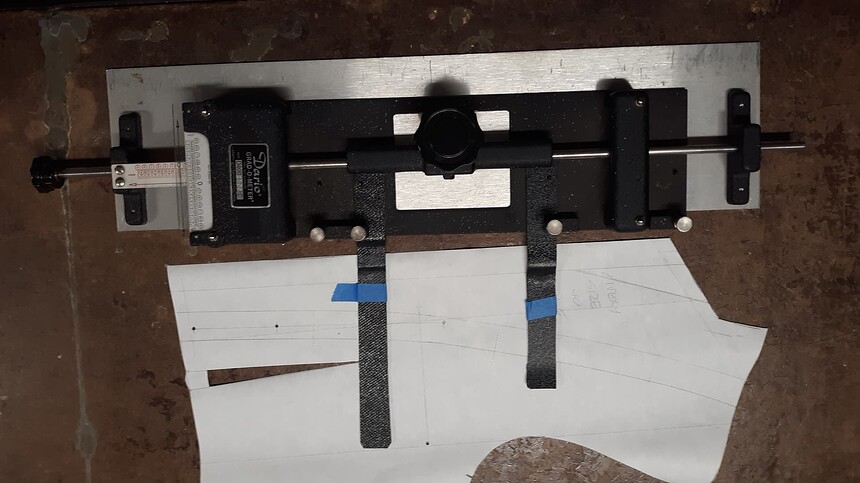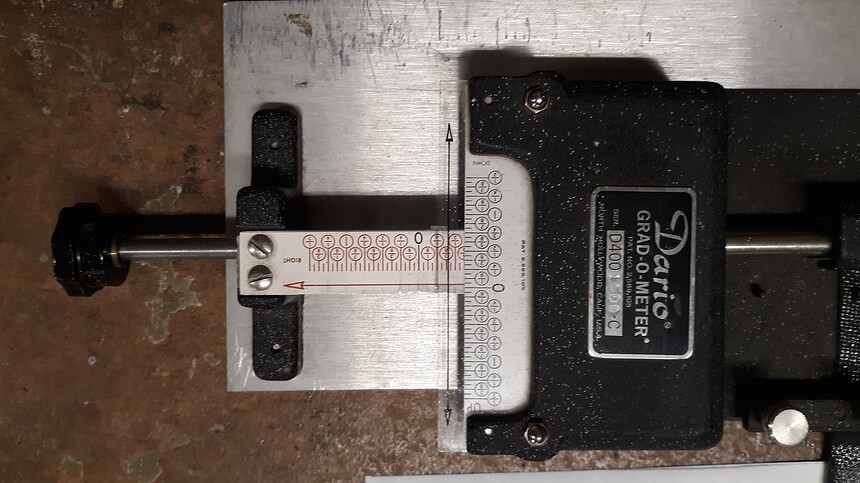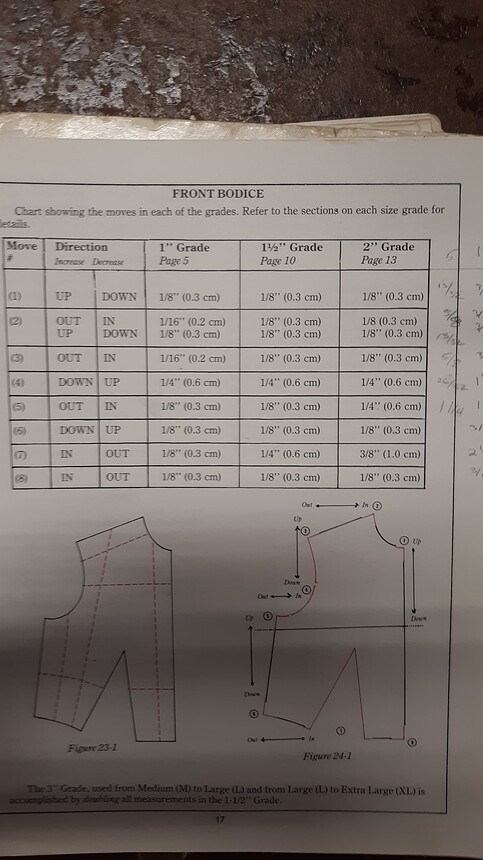Estoy aprendiendo a usar la plataforma. Cuando agregamos una nueva tabla de medidas que nos aparece un cuadro de dialogo, elegimos “individual o multitalla”, luego la unidad de medidas y luego tenemos que poner la altura y base expresada en centímetros(en caso de haber elegido esto como unidad de medidas). Mi pregunta es de a donde sacan esa referencia de base, altura o talla??? Cómo se que tengo que poner ?
Hola y bienvenida a Seamly2D, @solchazarreta
La mayoría de los patronistas crean sus propias tablas de medidas multitalla a partir de sus tablas de medidas estándar. La Base es el punto de partida de la tabla de medidas que están utilizando y la Talla es el incremento entre cada talla. La altura es el incremento adicional, por talla, necesario para afinar para personas más altas o más bajas.
Yo sólo utilizo la base y la talla. La altura adicional sólo se utiliza en la mayoría de los casos en el estándar de medidas ruso (creo que para los uniformes militares).
Traducción realizada con la versión gratuita del traductor DeepL Translate: The world's most accurate translator
Hello & welcome to Seamly2D, @solchazarreta
Most pattern makers create their own multi-size measurement charts from their standard measurement tables. The Base is the starting point of the measurement chart that you are using and the Size is the increment between each size. Height is the additional increment, per size, needed to fine-tune for taller or shorter people.
I only use the base and size. The additional height is mostly only used in the Russian Measurements Standard (I think for Military Uniforms).
No matter how you make a pattern, you generally need to adjust for the height… generally by nape to waist. In fact I just got done grading a pattern for a Butler’s tailcoat… the existing pattern was a size 6 foot tall, 44 chest with a 17 nape to waist. I needed to grade to a 6’-4" tall, 40 chest, and an 18 1/2 NtoW. Using my old trusty Grad-O-Meter, it was a simple task.
Using the 2 knobs you can move a pattern piece in/out and/or up/down in 1/16" increments. The trick is knowing how to apply the grade rules - which I assume the multi size tables in a sense represent.
@Douglas, each time you post a tool, it blows my mind  How does this one work ?
How does this one work ?
It’a actually quite simple. There are 2 rack and pinion gears that you can move left and right or up and down by turning the corresponding knob. This moves the pattern piece you attach - I got this long ago second hand and it was missing the metal clips that would normally hold the pattern piece… so I just stuck a couple scrap pieces of plastic on and just tape the piece on. As you can see in the photos there is an XY scale, which will indicate how much the piece has moved depending on which direction you turn one of the knobs. Based on a given pattern, and the grade rules, you can move each grade point to make a pattern larger or smaller… as shown in the pic below:
Once you’ve gone around the piece and marked the new grade points, you just connect them all… truing up your curves and such. Of course you have to keep in mind that there ate limits as to how big or small you can grade a pattern. The further away in size you get from your starting piece, the more error you introduce. Plus you have to consider that people all don’t just expand like a balloon, where they may not neccesarily get taller, but only wider. Again, that’s where I assume the “height” in the multisize measurements comes into play.
Additional note… the last pattern I had to grade was a 44 to a 40… but with the nape to waist 1 1/2" longer than the 44 pattern. So instead of moving for example point 6 down 1/4" for a 4" grade, I moved it 1 1/2". Which if you look at the rulers on the Dario, you can only move from 0, 0 - 1 1/2 " in any direction without unclipping the piece and moving back to 0,0 - so I was right at the limit. Basically all I was doing was like on a commerical pattern - “Lengthen Here”.  There’s several other ways you can grade a pattern by hand, the Dario just makes it easier. BTW, these things are selling for upwards of $600 used.
There’s several other ways you can grade a pattern by hand, the Dario just makes it easier. BTW, these things are selling for upwards of $600 used.
Thanks for the explanations and the photo !
I am just fascinated by tools  As far as I understand it, it is basically a “splash and spread” method, that keeps your original blocks whole, works quickly and keeps everything tidy. Nice one.
As far as I understand it, it is basically a “splash and spread” method, that keeps your original blocks whole, works quickly and keeps everything tidy. Nice one.
I won’t sell a kidney to buy one, but it is still a beautiful tool.
 I wonder though… With a Lego contraption the steps would be too large, but… where is my old Etch a Sketch… ? I might be on to something
I wonder though… With a Lego contraption the steps would be too large, but… where is my old Etch a Sketch… ? I might be on to something 
Haha, or a ruler with a pencil attached to the end?
Yes… it’s sort of like an Etch a Sketch, albeit the Etch a Sketch uses a cord around pulleys to move the stylus (I know because I pulled one apart as a kid :)) , where the Dario uses rack and pinion to move the assembly the clips are attached to. Basically the Dario moves a piece on top of a new sheet of paper in precise measurements. You can do the same thing manually by drawing an XY axis on your pieces, and on the new paper… marking of 1/8" tick marks on either side of the axes. Then using the tick marks you can move the piece manually according to the grade rules. It’s more prone to error though as the piece can twist off axis, and there is a width to pencil lines that can add up over multiple grades.
 Yes, I pulled mine(s) appart too, and you can’t get accurate steps with the pulleys system.
A prototype would be simple enough to make with Legos, as you can have regular steps with simple pieces, but it’s just… for the beauty of understanding the process ! I don’t have access to any of the requirements needed for making an accurate Grad’O’Meter (or, in fact, I have, but 3D printing won’t last enough to be accurate on the long term.)
Yes, I pulled mine(s) appart too, and you can’t get accurate steps with the pulleys system.
A prototype would be simple enough to make with Legos, as you can have regular steps with simple pieces, but it’s just… for the beauty of understanding the process ! I don’t have access to any of the requirements needed for making an accurate Grad’O’Meter (or, in fact, I have, but 3D printing won’t last enough to be accurate on the long term.)
I don’t have to reproduce or adapt patterns on a larger scale, and am quite satisfied with my ruler, scissors and pencils methode 
Anyway, what a great tool !
By the way, the inventor of the Etch a Sketch was a very nice french ingeneer named André Cassagnes, who was a great kite artist.
I learned to sew on an industrial sewing machine by making kites, and I met him in a kite convention where we both ended opponent in a fighting kite challenge. He was an old man and I was maybe 20.
He offered me one of his mini kites 
Wow! @Blueleto, such a nice story. Thank you very much for sharing 
Another area I haven’t thought of using Seamly for. I’ve thought of parachutes - I use to fly large high power rockets as a hobby and usually made my own chutes - but didnt think of kites. ![]()
I might share some of them before next summer 

I 've been preparing for an exam for months now, and everything will be over in november.
I can’t wait to get this over with and come back to patternmaking 

Hope I am not too rusty with Seamly… Kites seams a nice training 


